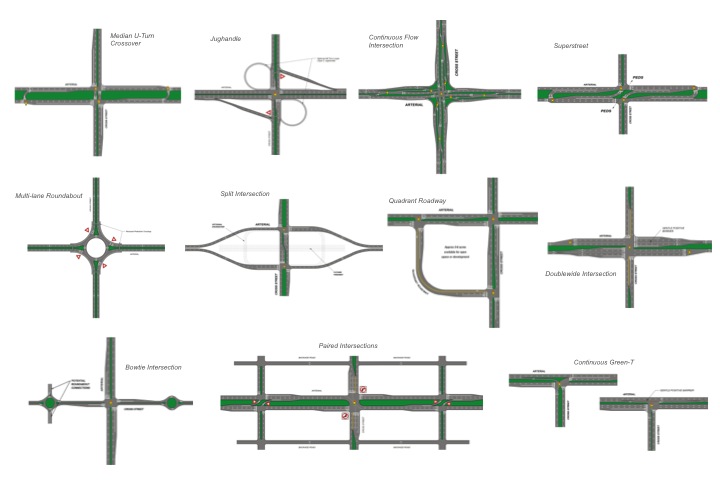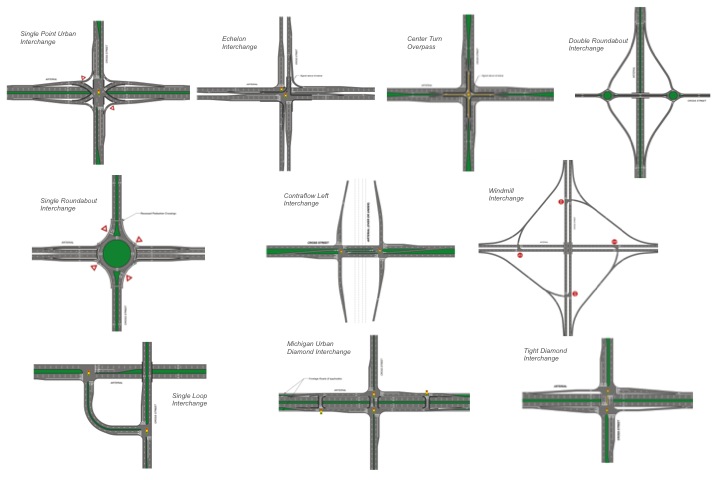Introduction
As an alternative way to mitigate traffic congestion on urban arterials, unconventional arterial intersection/interchange design, or UAID, has been studied and developed by traffic communities.

UAID generally reroutes one or more movements in the intersection using a unique geometric design. One of the benefits brought by this creative design may be the reduction of crossing points. Unconventional designs also reduce the number of signal phases, or even eliminate them altogether. Some other UAID designs may emphasize critical movements or split the intersection plane. All of the designs aim to decrease delay and improve the capacity and safety of the intersection. All the designs can be classified according to whether or not they use traffic signals and whether they are grade-separated, which means split-level.

As a leader in research and application of unconventional intersection designs, Maryland has various unconventional intersections at locations around the state. The most commonly seen designs in Maryland are the superstreet, the diverging diamond interchange and the continuous flow intersection.

In this webpage, you can find information for nearly all the unconventional intersection/interchange designs. Please select a category or a design at the left side to start.